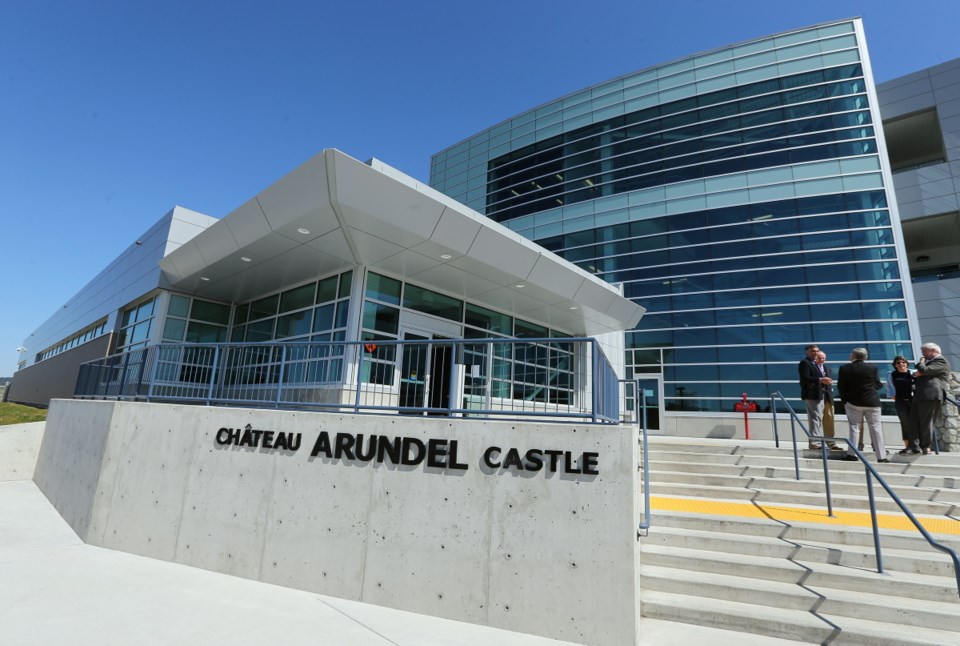Canada’s Pacific coast helicopter unit has moved into a $155-million facility at Victoria International Airport, bringing together operations that had been spread among aging structures.
The 443 Maritime Helicopter Squadron, which traces its history to the Second World War, has dubbed its new headquarters Arundel Castle in honour of that time.
“One of the perks of being the first to occupy this building is that we were given the honour of choosing the name,” said Lt.-Col. Patrick MacNamara, the squadron’s commanding officer. “In the end, the unit chose the name which represented the spirit of the squadron, Arundel Castle.”
MacNamara explained that the castle was a dominant feature of the area in West Sussex, England, where 443 Squadron had its roots as a fighter unit equipped with Spitfires.
“It was from this location that 443 Squadron supported the Normandy D-Day landings and helped protect the precarious beachhead in the crucial days that followed.”
The squadron was then deployed to France.
The castle is now the namesake of a 215,000-square-foot facility that houses five Sea King helicopters, which will eventually be replaced by Canada’s new Cyclone helicopters. MacNamara said the transition should happen in a couple of years, with preparation of the Cyclones for deployment “already well on its way.”
“443 Squadron will likely be one of the later squadrons to be equipped with the Cyclone down the road,” he said.
Thursday’s opening ceremonies for the Royal Canadian Air Force facility marked “a pretty immense day,” MacNamara said.
“We’ve been waiting a long time for this building. It’s a fantastic structure, it’s going to basically put all of our operations under one roof for the first time in 25 years. I foresee us having a much more efficient operation, and being able to support our aircraft and our people much better.‘‘
Previously, the squadron was housed in a number of Second World War-era buildings at the airport, MacNamara said.
He said the new structure is purpose-built, earthquake-proof and tsunami-resistant, and serves a complement of about 230 staffers, along with 50 reservists. When the Cyclones arrive, about 50 more staff members could be needed.
MacNamara said 443 Squadron is a front-line combat unit and anti-submarine unit whose main job is to support the navy.
‘‘Most of our flights depart from here and land on the back of a ship and sail over the horizon with a ship, and supporting the ship. We do fly quite a bit in the local area, for proficiency-training only.”
He said the squadron also gives support to other government agencies and Canada’s allies, and often performs search-and-rescue duties as a secondary role.
During Thursday’s ceremonies and the consecration of the squadron’s new colours, Lt.-Gov. Judith Guichon noted that it was also the 98th anniversary of the day that ‘‘Canadians came together as a nation and went over the top at Vimy Ridge” during the First World War.
“That is a part of our collective history,” Guichon said.
“It is fitting that today we conduct this important ceremony to consecrate your new colours. Colours and standards were rallying points throughout our history.”
How to build a castle: A partial supply list
• 2,445 tonnes of steel
• 36,490 bolts
• 567,000 kilograms of drywall
• 16 foam generators and 903 sprinkler heads for the fire-suppression system
• 1,350 steel support piles underground



